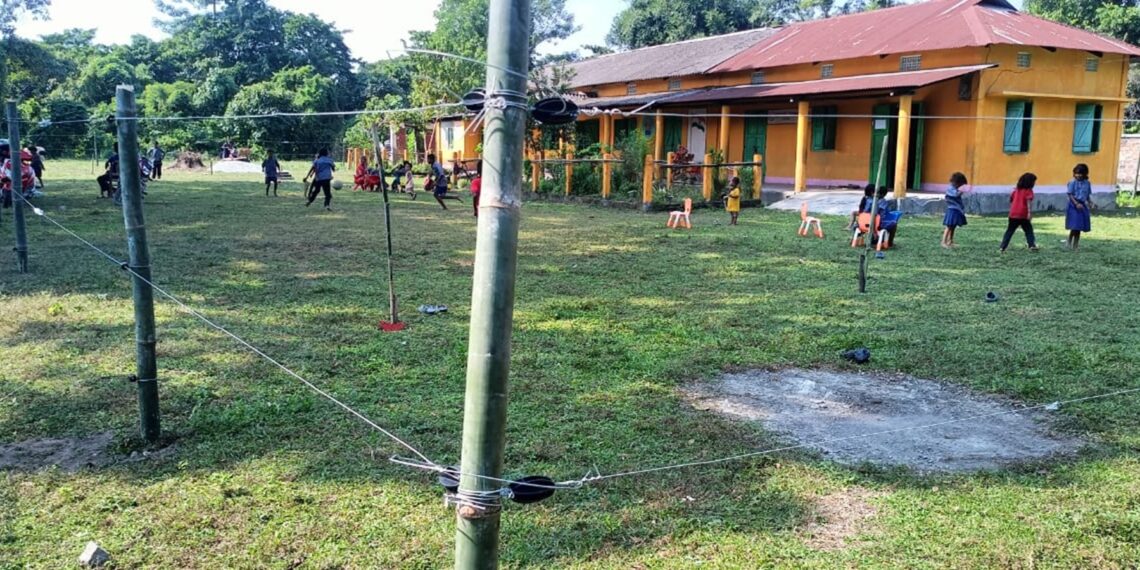GUWAHATI: The escalating human-elephant conflict (HEC) across various regions of Assam has not only brought about hardships to a significant population but has also disrupted education of children.
In response to this challenging issue, a biodiversity conservation organisation, Aaranyak, has embarked on a pioneering initiative to mitigate HEC and foster coexistence around schools.
The organisation has recently installed solar fences around two Lower Primary Schools (LP Schools) and an Anganwadi Centre to ensure that education can continue uninterrupted for approximately 145 children in these vulnerable areas.
One of the schools protected by a solar fence is the 331 No.2 Nonke Sonajuli LP School, located in the revenue village No. 2 at Sonajuli under Khairabari Educational Block in Udalguri District.
With support from the SBI Foundation, Aaranyak has encircled this school with a solar-powered fence, which will safeguard 55 students, and an additional 30 attending classes in the attached Anganwadi centre. This initiative ensures that 85 children can continue their education without the looming threat of wild elephants.
The HEC threat stems from wild elephants encroaching upon school premises, posing threats to both property and students’ lives. Despite the best efforts of the vigilant villagers, elephants damaged the school last year, devouring the rice and other food meant for mid-day meals stored in the kitchen.
In another significant project, the organisation, in collaboration with the US Fish and Wildlife Service, has installed a solar-powered fence for HEC mitigation around the Kasibari Kochpara L.P. School near the Kumarkhali Reserve Forest in Goalpara District. This particular school has over 60 students.
Established in 1981, the school faced similar challenges, with wild elephants frequently resting in the area and causing damage to the school premises since 2018.
The installation team, led by Anjan Baruah, included Ripunjoy Nath and Rupam Gayary and local community of Kasibari-Koachpara.















